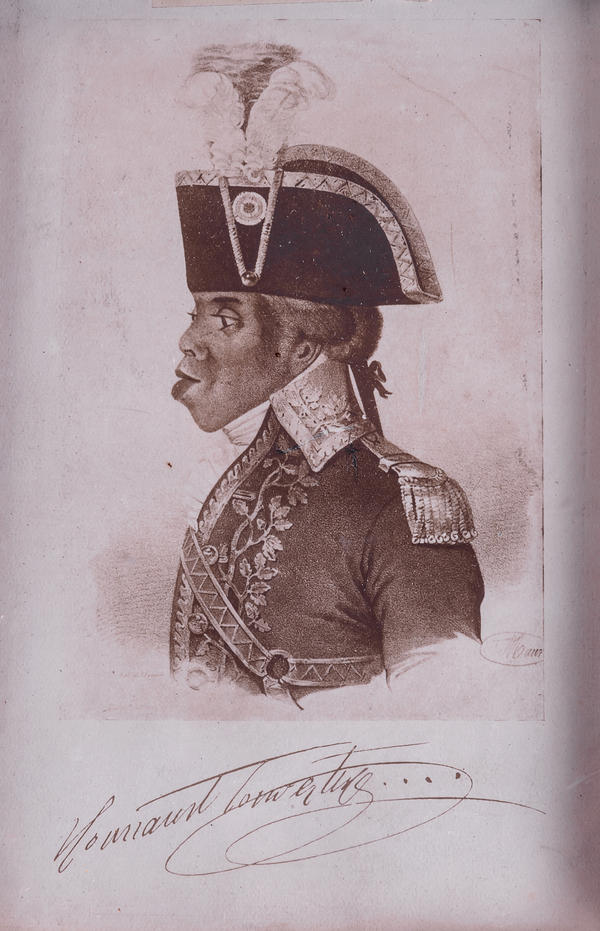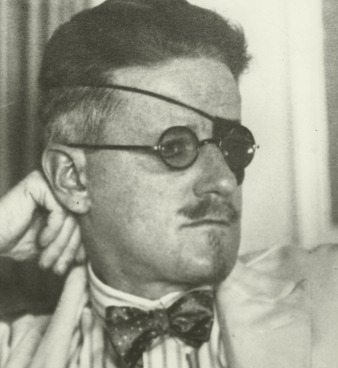The lithograph depicts Franсois Dominique Toussaint Louverture (1743–1803), the leader of the Slave Revolt in 1791 on the island of Haiti in the Caribbean Sea. The island was a French colony at that time. After the French Revolution of 1789, the mulatto demanded equal rights for the white and colored population of Haiti, but the French refused to release the colonies. So, in August 1791, the Haitian Revolution began.
In 1803, Napoleon lured Toussaint Louverture to Paris. They threw the well-educated and humane black leader into prison and killed him. The Haitians massacred all the white people on the island out of anger and Henri Christophe (1767–1820), a former associate of Toussaint Louverture, came to power. The revolution ended with the island declaring its independence from France in 1804, and in 1811, Henri Christophe declared himself King of Haiti and appeared to be a much more terrible tyrant than the French. An American writer John Vandercook wrote a novel about him, entitled Black Majesty. Inspired by this novel, Eisenstein wanted to produce a film about the ‘tragedy of the revolutionary leader transforming into a despot.’ He hoped to cast an African American actor and singer Paul Robson. However, at that time in Hollywood, one could not even mention a film about the black revolution.
In 1932, back home, Eisenstein received a script from the historian and writer AnatOly VinogrAdov about the first period of the Haitian revolution. It was called the Black Consul and featured Toussaint Louverture. This new project lit up Sergei Eisenstein. In the leading role, he planned to cast a director and actor, head of the State Jewish Theater SolomOn MikhOels (1890–1948). Paul Robson was supposed to play the role of General Dessalines. Still, the officials from the Soviet cinematography did not accept this idea. Eisenstein’s guess that Mikhoels held the talent of a great tragic actor proved to be true: three years later he brilliantly played King Lear.
In 1933, the Soviet Literature publishing house issued Vinogradov’s novel The Black Consul, which the historian dedicated to Eisenstein. The book is kept in the Film Museum. The inscription on the flyleaf says: ‘Author to author. The prevarication of our headquarters is going to have a secondary effect on you and a primary one on me. A. V.’ Eisenstein placed the photocopied lithograph of Toussaint Louverture’s portrait, painted by Nicolas Eustache Maurin. (1799–1850) and printed by Francois Seraphin Delpech (1778–1825), in a small frame behind the glass.
In 1803, Napoleon lured Toussaint Louverture to Paris. They threw the well-educated and humane black leader into prison and killed him. The Haitians massacred all the white people on the island out of anger and Henri Christophe (1767–1820), a former associate of Toussaint Louverture, came to power. The revolution ended with the island declaring its independence from France in 1804, and in 1811, Henri Christophe declared himself King of Haiti and appeared to be a much more terrible tyrant than the French. An American writer John Vandercook wrote a novel about him, entitled Black Majesty. Inspired by this novel, Eisenstein wanted to produce a film about the ‘tragedy of the revolutionary leader transforming into a despot.’ He hoped to cast an African American actor and singer Paul Robson. However, at that time in Hollywood, one could not even mention a film about the black revolution.
In 1932, back home, Eisenstein received a script from the historian and writer AnatOly VinogrAdov about the first period of the Haitian revolution. It was called the Black Consul and featured Toussaint Louverture. This new project lit up Sergei Eisenstein. In the leading role, he planned to cast a director and actor, head of the State Jewish Theater SolomOn MikhOels (1890–1948). Paul Robson was supposed to play the role of General Dessalines. Still, the officials from the Soviet cinematography did not accept this idea. Eisenstein’s guess that Mikhoels held the talent of a great tragic actor proved to be true: three years later he brilliantly played King Lear.
In 1933, the Soviet Literature publishing house issued Vinogradov’s novel The Black Consul, which the historian dedicated to Eisenstein. The book is kept in the Film Museum. The inscription on the flyleaf says: ‘Author to author. The prevarication of our headquarters is going to have a secondary effect on you and a primary one on me. A. V.’ Eisenstein placed the photocopied lithograph of Toussaint Louverture’s portrait, painted by Nicolas Eustache Maurin. (1799–1850) and printed by Francois Seraphin Delpech (1778–1825), in a small frame behind the glass.



